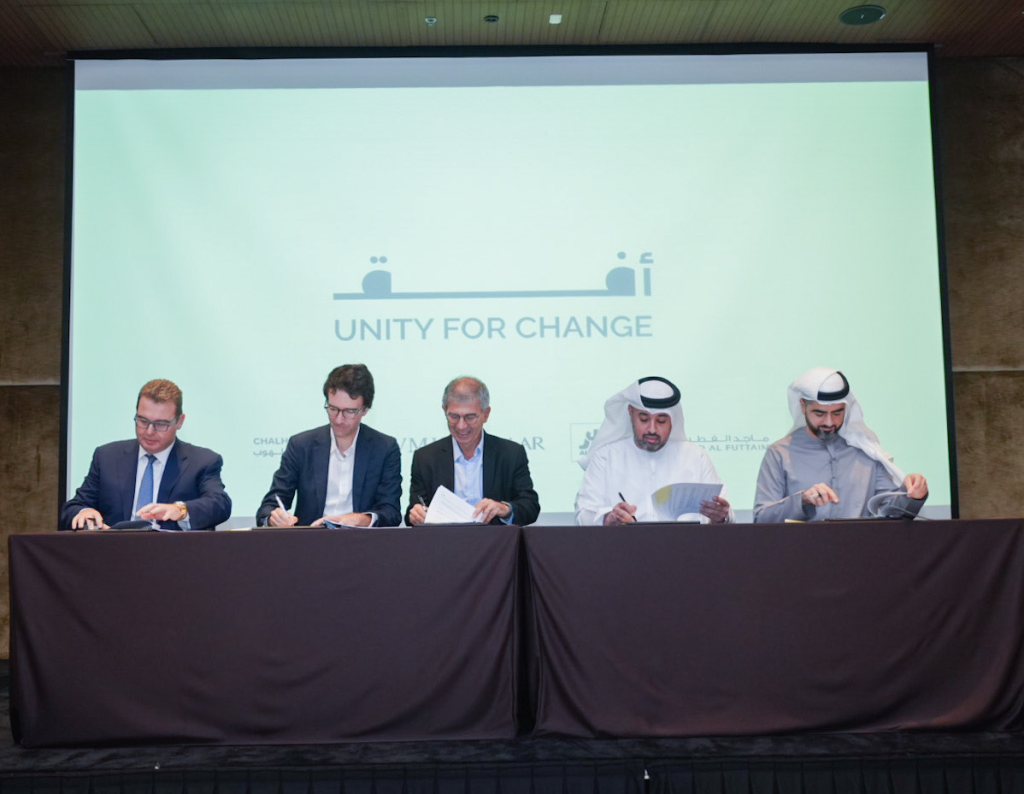PARIS — With the world watching COP28, LVMH Moët Hennessy Louis Vuitton signed two new agreements at the annual climate conference convened by the United Nations, including a partnership with Middle Eastern mall developers that will set clear impact reduction targets, and an agreement to support biodiversity projects in Brazil.
Since 2020, the luxury group has sought to become a bigger voice at the annual convention, and making COP an engagement on its agenda. LVMH head of image and environment Antoine Arnault joined diplomats and leaders on the ground in Dubai, inking the milestone initiatives for the luxury group.
The first agreement builds on its existing approach of partnering with shopping centers on environmental targets, this time enlisting four of the top real estate developers in the United Arab Emirates including Chalhoub Group, Emaar Malls, Majid Al Futtaim and Aldar Properties.
The agreement was signed with the regional retail players stepping up their commitments to new sustainability targets in water use, energy efficiency, waste management, air conditioning and use of clean energy, and eco-design and construction practices.
While this marks the first partnership of its kind in the region, it isn’t the first for LVMH, which pioneered this type of tenant and landlord agreement last year through an energy reduction pact with China’s Hang Lung Properties. That agreement covered 100 group stores.
“Our stores are the showcase of our excellence. Improving this footprint means setting an example, influencing behavior and making our stores and products more desirable. It also means improving the environmental footprint of our partners, because our stores are the landlords’ Scope 3,” Arnault told WWD.
“That’s why the five of us have put a lot of heart into defining the actions of this partnership, which concern energy, eco-design, water and waste management, defining the duties and responsibilities of each party. This kind of agreement will continue in other parts of the world,” he added.
Chalhoub also emphasized the need to work together, particularly in the fast-changing retail landscape of the Middle East.
“There are a lot of challenges in this part of the world from local infrastructure to lack of regulatory frameworks. The UAE is a new country, so it takes time and it’s developing. But when we look at how we will act on waste management and water management, using renewable energy, we have to do it collectively in our malls, the industry,” he told WWD. “This is why this partnership is so important. When we can collectively address the issue, it helps companies be more responsible.”
Under the moniker “Unity for Change,” the companies are coming together to reduce the environmental and carbon footprints of the retail sector. The signing was a kickoff for a more granular agreement on “clear objectives” that will govern common spaces, as well as individual retail stores. The group will also do further research into use of green concrete and recycling objectives.
Arnault noted that Berluti, where he currently serves as chief executive officer through the end of the year, became the first luxury store in the world to hit the Full Project certification from the Forest Stewardship Council at its Mall of Emirates location. That mall is owned by Majid al-Futtaim, one of the key partners in the new agreement.
“It shows our commitment to sustainable materials in our value chain and the importance of biodiversity, as well as climate, in our environmental targets,” Arnault said of putting targets in practice with the Berluti store. The group noted it’s an example of eco-design with architects to artisans being involved in the build, as well as the mall developers.
In a second big signing, LVMH invested 1 million euros in a partnership with the Brazilian NGO Foundation for Amazon Sustainability to fight deforestation. It’s part of the group’s longstanding relationship with UNESCO’s “Man and the Biosphere” project, with an overarching goal of protecting 5 million hectares of wildlife habitat.
The partnership will study and monitor wildlife in the Rio Negro region, develop biodiversity management education at local schools, and invest in production infrastructure of existing local supply chains.
It was signed by Arnault, LVMH environmental development director Hélène Valade and FAS chief executive officer Virgilio Viana.
“Deforestation and hydric stress are among the main threats to ecosystems in the Amazon region,” he said. This project “respects local cultural contexts,” Arnault said, adding the project addresses the intertwined issues of environment and economic need. “LVMH’s overall objective is to regenerate 5 million hectares of wildlife habitat worldwide, and to limit the environmental impact of its activities. The idea being to support people in moving from an informal economy to a formal economy and to fight against deforestation for economic reasons.”
Arnault said this agreement, as well as the group’s continued support of the Circular Bioeconomy Alliance and programs in the water scarce region of Chad, demonstrate its commitment to regenerative agriculture.
At COP27 last year, LVMH signed another biodiversity partnership, with the Circular Bioeconomy Alliance. This year it revealed the initial results of that program, which trains farmers and preserves land, are on track to produce its first harvest of regenerative cotton in 2024. LVMH anticipates integrating this material into its supply chain.
The partnerships are designed to have long-tail effects across the regions. “What’s going on is way beyond fashion, all industries are concerned,” he said.
COP28 convened Nov. 30 under a cloud of skepticism since the host country Dubai is a major oil-producing nation. The conference’s president Sultan Al Jaber also holds the position of CEO of the state oil company.
Arnault emphasized that it is important to remain engaged.
“We believe we need to act collectively, joining forces with our partners, find solutions together,” he said.
It’s the third COP for LVMH, and the group’s presence “is continuing its policy of testimony and dialogue with stakeholders” with its activations at the convention. The group also brought designer Stella McCartney to COP and supported her “sustainable market” pavilion, which showcased innovative materials. McCartney formally launched her work with cork from LVMH-owned Veuve Clicquot.
Arnault said the group’s philosophy focuses on partnerships across industries.
“We usually are where things happen,” he said of the group’s presence at environmental conventions. “We believe that private players must support the public sector and provide solutions to the climate challenge. It’s also important to testify of our progress, and as a leader, to set up an example — act on climate, but also on biodiversity, both being linked.”
While COP28 has seen some controversy over remarks Al Jaber made that there is “no science” behind the phase-out of fossil fuels, Arnault said that those present were continuing to work on moving forward.
“What I have seen on the ground is a very strong mobilization of stakeholders to find solutions and move forward together, as illustrated by our partnership on stores with Chalhoub and three other main landlords in the region,” he added. COP28 will conclude Dec. 12.
LVMH, which set a target to reduce its energy use by 10 percent within the last year, said it has reached that goal. It has also set the goal of “full traceability” by 2026. Arnault was affirmative that the group is on the path to achieving that target, as well as its emissions reductions targets that encompass a 50 percent reduction in Scope 1 and 2 emissions by 2026, and a 55 percent reduction in Scope 3 emissions by 2030.
“The certification rates of LVMH’s main supply chains according to the most robust standards have increased significantly over the past two years, providing reasonable assurance that the 2026 target will be met,” he said. “LVMH has set ambitions, identified levers for action to achieve them and will make additional announcements on the achievement of these results.”
The group’s report will be unveiled on Dec. 14 at a conference in Paris.
— With contributions from Ritu Upadhyay (Dubai)



